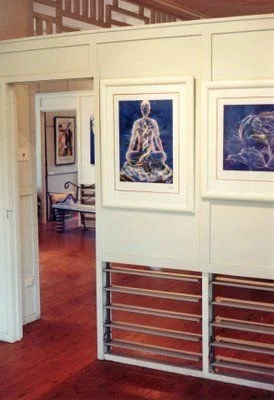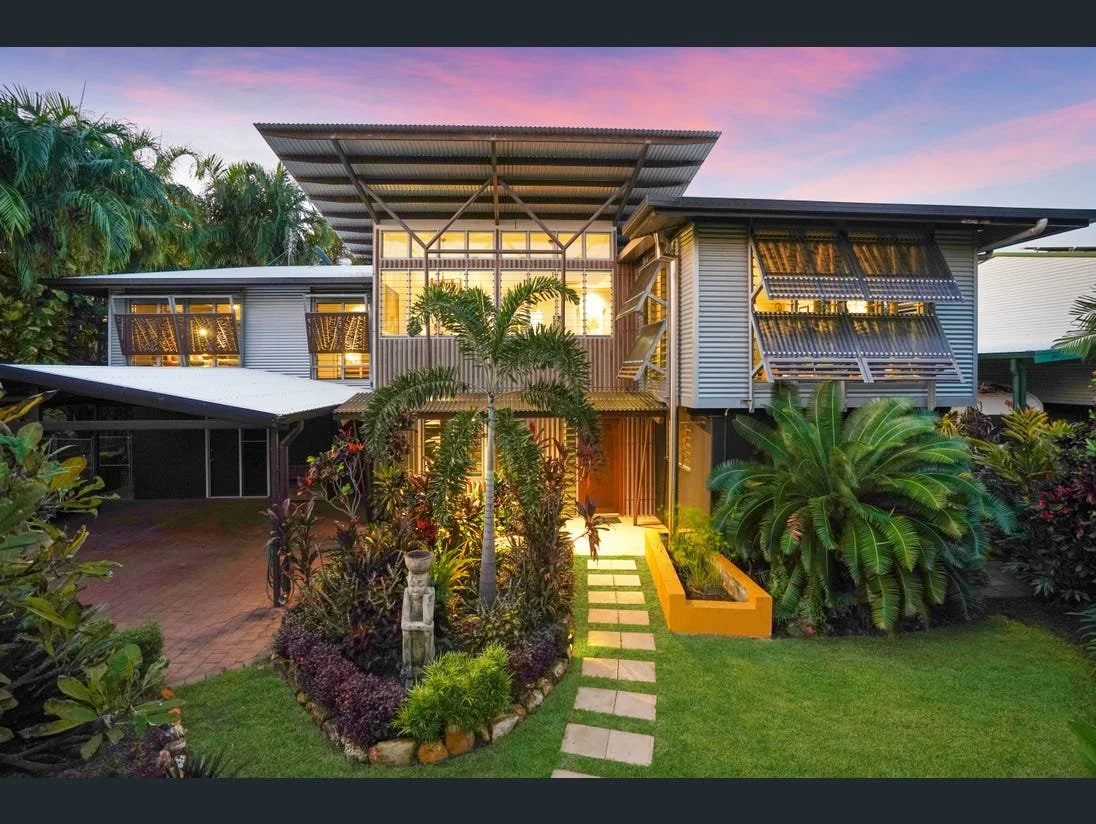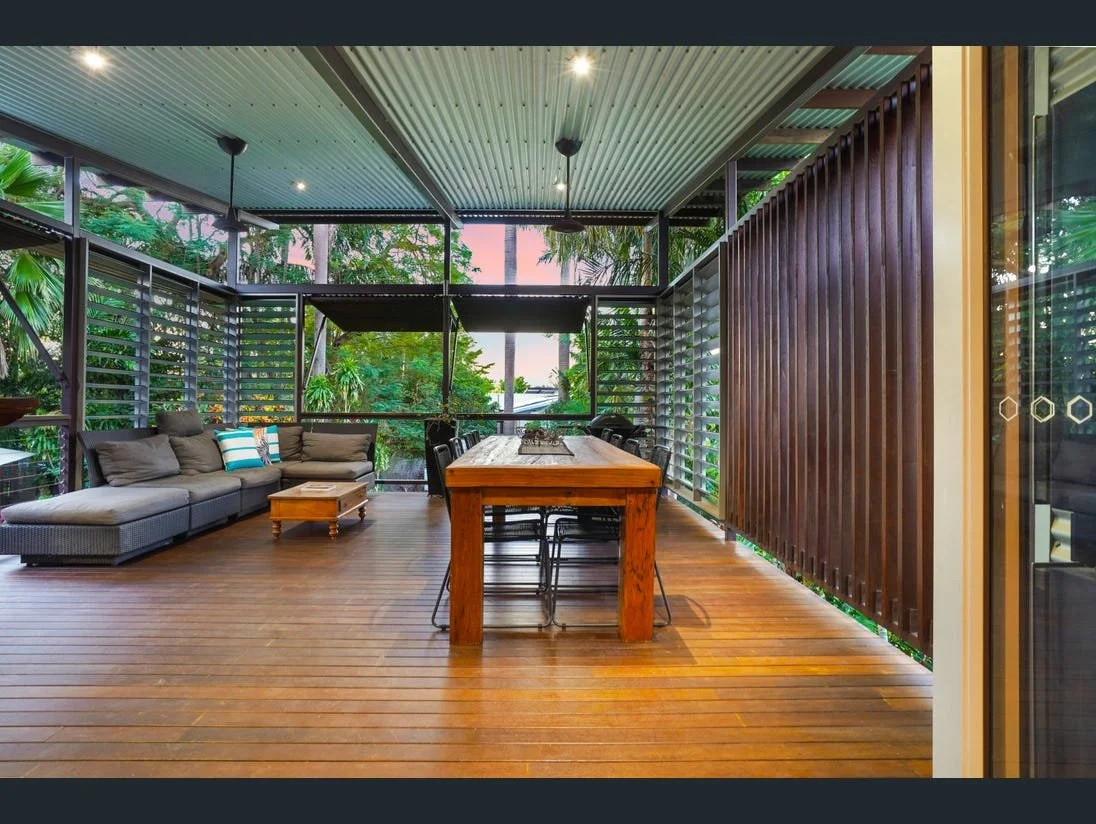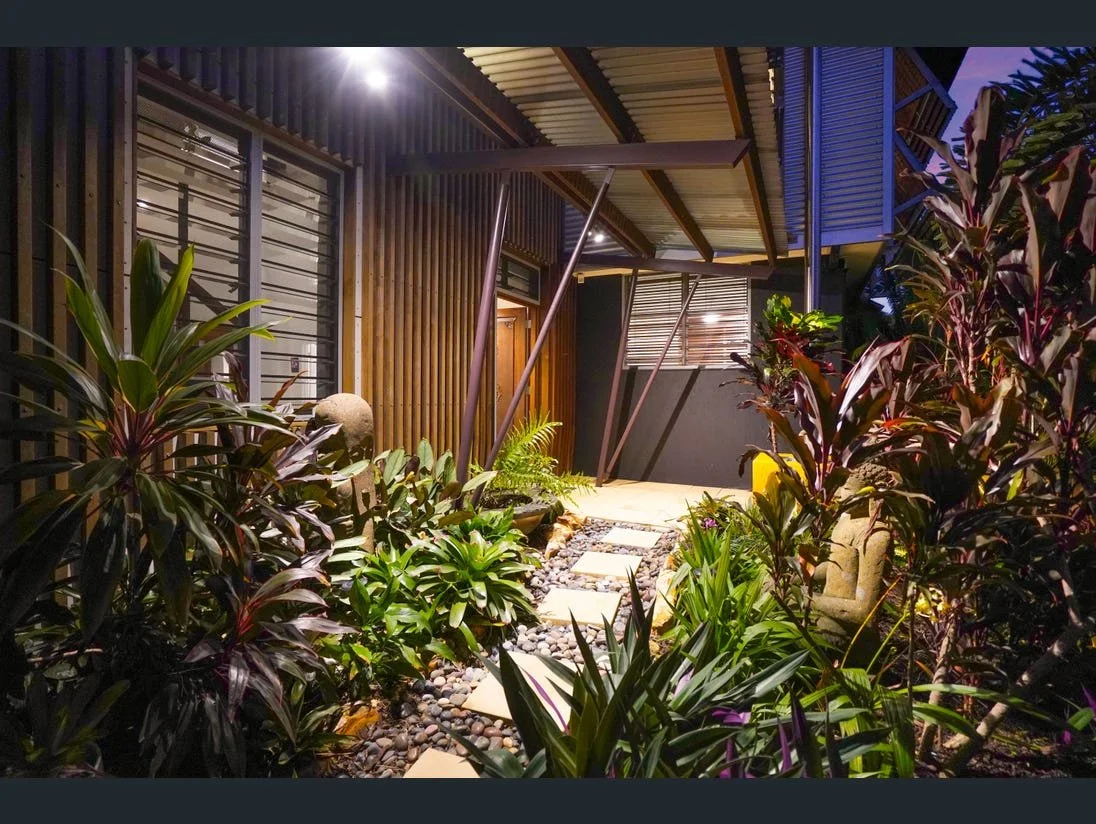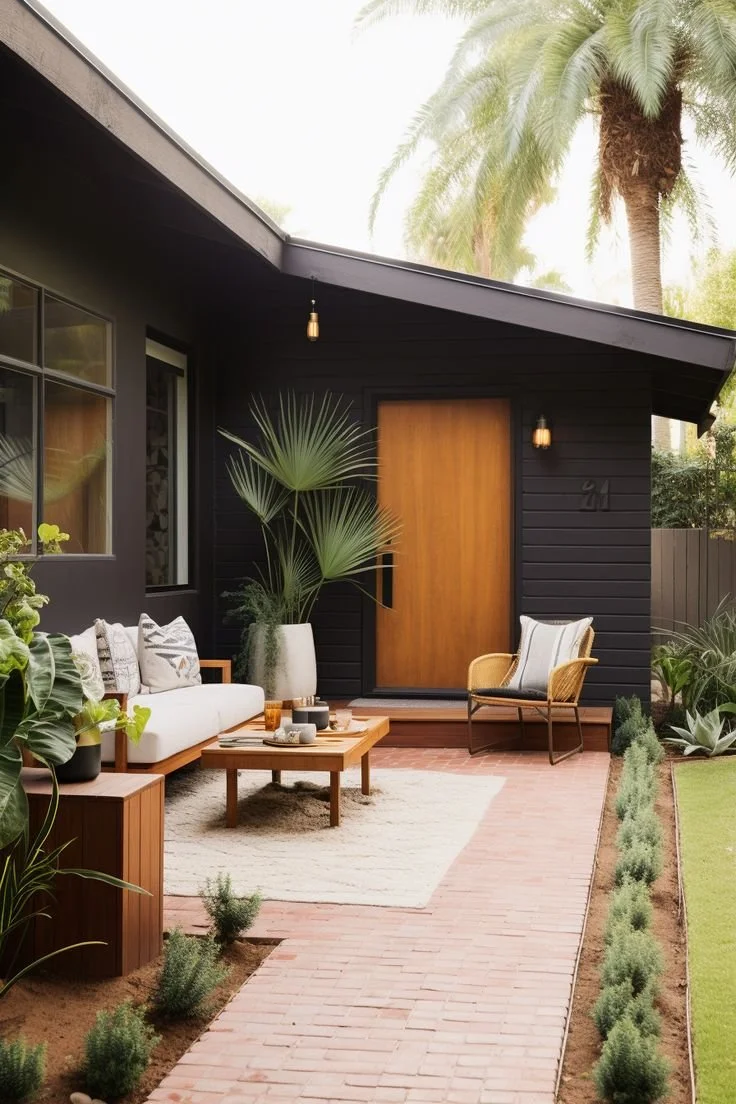It’s getting hot in here! (Part 1)
~ keeping cool with colour ~
Last Sunday, I attended COOLmob’s full program of the Darwin Sustainable House Day. It was great to learn about, and inspect the 3 homes, perfectly designed for tropical living, and it was great to see so many other interested Darwin local’s in attendance! One of the houses was Burnett House at Myilly Point, built in the 1930s. Burnett sure knew the best way to live in the tropics and was onto something that our city has all but forgotten about: Heat Management.
Burnett House, Myilly Point, Darwin, managed by the National Trust was built with windows to the corner, banks and banks of louvres, high set and oriented to catch the breeze
LPB Designs and Interiors - Sustainable & Healthy Design Blog
Photo Credit: https://pin.it/3sDTfr3BG
The interior of Burnett House at Myilly Point, Darwin. Notice the walls don’t go to the ceiling and the internal walls have louvres built into the bottom to assist with cross ventilation throughout the house
LPB Designs and Interiors - Sustainable & Healthy Design Blog
Photo Credit: https://pin.it/3k9c6lLnr
Darwin Sustainable House Day participant in Lantana Court, Nightcliff, has used a combination of reflective exterior cladding, large bays of louvres, a tropical garden with ponds to cool air as it passes into the house, cross ventilation, shaded windows and other sustainable building design tools to create a comfortable, beautiful home.
LPB Designs and Interiors - Sustainable & Healthy Design Blog
Photo Credit: Ray White - Darwin
https://www.realestate.com.au/property/7-lantana-ct-nightcliff-nt-0810/
After the 3 house tours, I attended the Thermal Comfort Forum which provided practical ways to manage the temperature within your home…… and it’s not all with the remote for your air conditioner!
However, I’m sure we knew that and I’ll give us credit accordingly, but let’s break this down into actionable ways we can improve things, for ourselves and the planet.
With Darwin being north of the Tropic of Capricorn, we get the sun overhead on both the northern side of our homes (in the dry season) and the southern side (in the wet season). And of course, we get it on the eastern (morning) and western (afternoon) sides because we live on planet Earth and that’s just the way it goes.
We just can’t seem to get away from the sun, and the colour choices (and materials) we use on the exterior of our homes may just be scrambling our brains with heat and draining our bank accounts from the cost to keep cool.
The colour choices we make for the exterior of our home in the tropics, directly affects the temperature within our home and how much power we use to cool it down.
Is your home too hot to handle? Its exterior colour scheme may be contributing to that!
LPB Designs and Interiors - Sustainable & Healthy Design Blog
Photo Credit: https://pin.it/3tN7OcNY5
Dark coloured homes are elegant and stylish and look beautiful, but when we compare that to our energy use because of the heat that they attract and retain, they might be less than desirable.
As you probably know, dark colours absorb heat and light colours reflect heat. Add to this issue, the fact that our Darwin homes are typically made of concrete-filled block walls, which provide opportunity for heat from the sun to absorb into the block work (known as solar gain), be stored in the block work of the house and slowly be released again at night when we have high night time temperatures across much of the year, and it is no wonder that our homes are too hot to handle!
Concrete-filled block walls are classed as having a high thermal mass. If you live in southern Australia or NZ, or cool to cold areas in the northern hemisphere, high thermal mass and solar gain is used to warm up your home, retain heat and reduce your heating needs (known as Passive Heating). However, high thermal mass and solar gain is not what we need in the tropics! We need the opposite, known as Passive Cooling.
Having a dark-coloured, heat absorbing colour scheme on the exterior of your concrete-filled block home is costing you additional money to cool your home and get it to your desired comfort level.
Unless you are on renewable energy, this directly translates to Greenhouse Gas emissions.
So what are the solutions to a dark-coloured concrete-filled block home?
Well, that depends on where your home is at in its journey!
NEW BUILD
Opt for light-coloured, reflective roof and wall materials and a paint scheme with a good quality paint brand, suited for our harsh tropical climate such as Dulux Weathershield, Taubmans All Weather or Haymes Paint Solashield.
If you really desire a dark exterior colour scheme (because while they are not great on energy consumption and in turn, the planet, they do look 🤩), I recommend that you work with a local Building Designer to ensure your home is designed and built to suit the orientation of the block and landscape and how you plan to cool and live within your home. A Building Designer also utilises other building design tools to keep your house cool. In fact, I recommend engaging with a local Building Designer to maximise on their expertise for your new home no matter what.
TIME FOR A PAINT
They say a change is as good as a holiday, so if your home is ready for a new lick of paint, reach out, I can help you with a new exterior colour scheme to suit your style and improve your energy efficiency!
RETROFITTING
If you really want to keep your dark-coloured exterior you can take other steps to counteract the heat absorption of your concrete block walls. This will depend on how you cool your home and your project budget. Retrofitting your home to better manage the heat may be as simple as insulating your ceiling space and walls, and draught sealing; it could be using your garden to shade the walls, glazing and roof of your home; maybe your home needs better ventilation to expel the extra heat, or perhaps you could install low (heat) mass false walls. It could be all of these and more.
Retrofitting solutions are great even for light-coloured concrete block exteriors and will save you on energy consumption, and in turn, Greenhouse Gas emissions.
Reach out if you would like to discuss retrofitting your home!
TIME FOR A NEW ROOF
If your dark-coloured roof is ready to be replaced, why not swap it out for a light-coloured, low (heat) mass, reflective roof such as Colorbond Dover White, Surfmist or even, Southerly. Another alternative is going with an unpainted, galvanised corrugated iron roof.
Colorbond colours that will enhance your home’s efficiency
LPB Designs and Interiors - Sustainable & Healthy Design Blog
Photo Credit: https://colorbond.com/colours?product=roofing&finish=classic&material=colorbond-steel
Every little bit we do, every little improvement we make, makes a difference in tackling our current Climate Emergency.
Change is in our hands.
Get in touch if you would like some support in your journey, or share what changes you have made to your home that have helped cool it down and reduce your power bill!
Additionally, if you would like further details on enhancing your home’s sustainability and health, jump on the COOLmob website, they have a heap of new resources!
https://www.coolmob.org/


